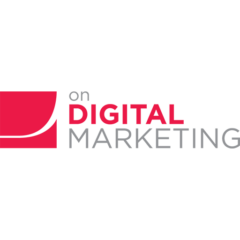Radio and the Rise of Mass Media
Congratulations. You’re entering the field of marketing at a time of incredible change. An industry once stagnant for decades is undergoing seismic shifts and whenever there is big change there is big opportunity.
It’s easy to take these changes and technology for granted. In the grand scheme of mass communication, digital marketing is still in its early stages. Many of the most influential companies in the industry have only been around since the 2000s – Google was founded in September of 1998, Facebook came on the scene in February of 2004 and YouTube followed a year later in February 2005 – but these companies have forever changed the field of marketing leaving many organizations and professionals struggling to adapt. The web space moves quickly and disruption is becoming the norm – who would have thought mobile would eclipse desktop so quickly?
But things weren’t always so quick to change.
To truly understand the framework of marketing we need to take a step back and review our history lessons as they offer clues on how to market effectively.
Radio’s Fundamental Role
“The radio craze will die out in time.”
— Thomas Edison, American inventor, 1922
While newspapers have been around for hundreds of years following Gutenberg’s printing press invention, radio was the first mass media form of communication that offered near real-time delivery and saw widespread use in most American homes by the 1930s. Various radio programs, such as the Chase and Sanborn Hour, were the precursors to network television series and developed large audiences of regular listeners.
The Radio Corporation of America (RCA) was formed after World War I and by the 1930s not only was a radio manufacturer but also had a firm grip on program stations and program stars. It owned the device and the network – a powerful combination. (Source) Take note, as we’ll return to this in a second.
Taking a cue from the newspaper industry, marketers looked to subsidize the medium through advertisement. In exchange for airtime, companies paid to to plug their products with program sponsorships and thus began the infamous lead-in of “This message brought to you by”. Savvy marketers at this time were starting to weave their messaging together so that print ads in magazines and newspapers coincided with the radio message. This was the precursor to a marketing philosophy that would eventually be called Integrated Marketing Communications (IMC).
Everything changed with World War II. We’ve all heard President Roosevelt’s scratchy voice booming out to the nation after the events of Pearl Harbor. In fact, Roosevelt was one of the first politicians to realize how the medium could be used as a tool for communicating with constituents through his “Fireside Chats” during the Great Depression. (Another early adopter, Senator Barack Obama, would brilliantly use new technology platforms almost 75 years later to help galvanize young voters through social media.)
By the early 1940s, the radio was deeply integrated into Americans lives and culture. Following the Allied victory, Americans were ready for the good life. They’d suffered through the Depression and felt entitled to a bit of prosperity. This also saw the largest jump in birth rates, a cohort that was to become known as the “Baby Boom” or Baby Boomers as they are known today. Given their large numbers and incredible buying power, this demographic would go on to shape society and consumer behavior.
